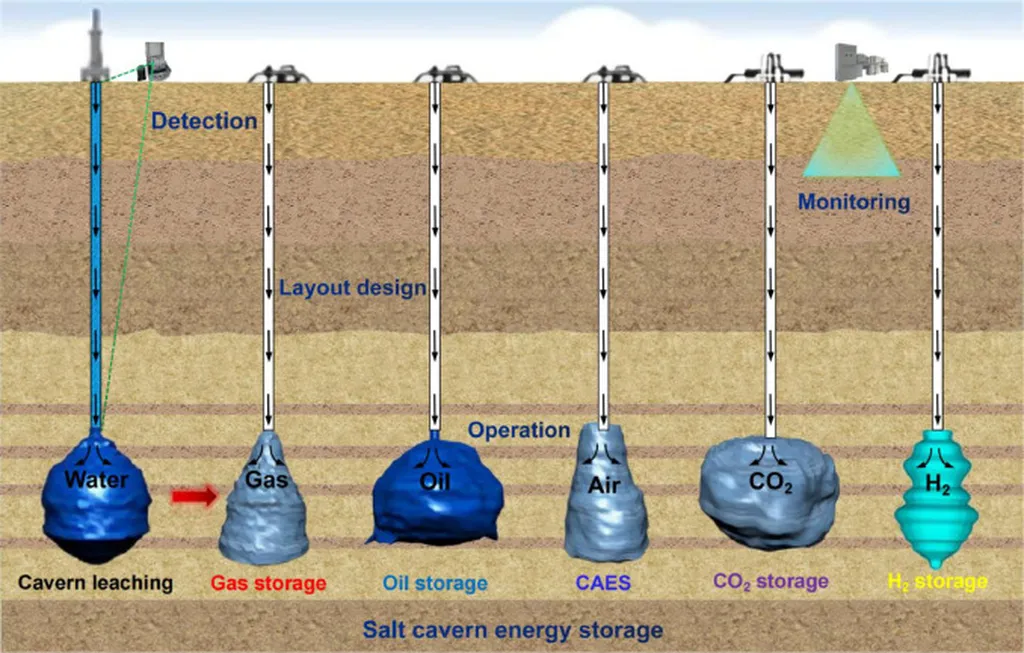In the quest to optimize underground gas storage, a team of researchers led by C. Zha from the Beijing University of Technology has made a significant stride with the design of an extendable leaching-optimized cavern construction device. This innovation, detailed in a recent study published in the *Journal of Applied Fluid Mechanics* (translated as *Journal of Applied Fluid Mechanics*), promises to revolutionize the efficiency of salt cavern gas storage facilities, a critical component of the energy sector.
Salt caverns have long been recognized for their potential in storing natural gas, hydrogen, and other energy resources. However, the initial formation of these caverns through solution mining has often been a slow and inefficient process. The newly designed device aims to address this challenge head-on. “Our device is equipped with three key features: controllable working status, adaptable extension, and replaceable nozzles,” explains Zha. “These features allow for precise control over the leaching process, significantly enhancing the formation rate of salt caverns.”
The research team conducted extensive simulations using FLUENT software to analyze the hydrodynamic behavior around the device. Their findings revealed that the device can alter the shape of the cavity by adopting positive circulation. Notably, they discovered that a nozzle inclination angle of 0° produces a conical turbulence pattern, which is optimal for cavity construction. “The higher the injection velocity, the greater the distance and width of the high-speed jet stream,” Zha adds. “However, beyond a critical velocity threshold of 16 m/s, we observed rapid attenuation of jet propagation metrics.”
One of the most intriguing findings was the impact of angular velocity on jet energy attenuation rates. The simulations demonstrated that angular velocity variations play a dominant role in this process. This insight could have profound implications for the design and operation of future leaching devices.
The commercial impacts of this research are substantial. Efficient salt cavern construction can lead to more cost-effective and reliable underground gas storage solutions, which are crucial for energy security and grid stability. As the world transitions towards cleaner energy sources, the demand for efficient storage solutions is only set to increase. This research provides a theoretical basis for the practical application of the extendable leaching-optimized cavern construction device, paving the way for more advanced and efficient energy storage technologies.
In the broader context, this study highlights the importance of innovative engineering solutions in addressing the challenges of the energy sector. As Zha and his team continue to refine their device, the potential for transforming the landscape of underground gas storage becomes increasingly apparent. The findings published in the *Journal of Applied Fluid Mechanics* offer a glimpse into a future where energy storage is not only more efficient but also more sustainable.

